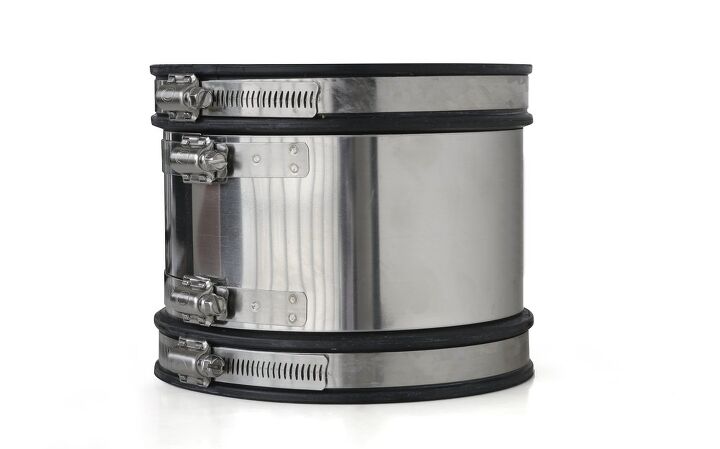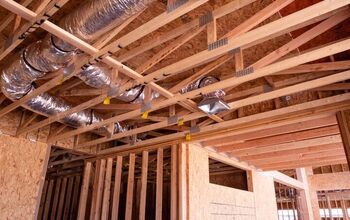No Hub Couplings Vs. Flexible Couplings: What's The Difference?

No hub couplings and flexible couplings may look a lot alike. However, the surface similarities mask the real differences between these two types of plumbing couplings. Flexible couplings and no hub couplings are different, with different applications and meeting different standards.
No hub couplings differ from flexible couplings in the thickness, strength, and protection of the coupling materials. Most flexible couplings work in above-ground plumbing installations where stress is at a minimum. No hub couplings with stronger materials and protected jackets carry approvals for below-grade installations and heavier-duty uses.
The key to using flexible and no hub couplings is to understand the differences in the manufacture of these products, the design and engineering of the products, and the codes governing the use of these products. Using the wrong type of coupling in the wrong situation can result in damage and unnecessary costs.
Do You Need to Hire a Plumber?
Get free, zero-commitment quotes from pro contractors near you.

Flexible Couplings
Flexible couplings come in a wide variety of styles, sizes, and types. Typically, flexible couplings are not rated for underground use or where cast iron pipe is used and supported. Flexible couplings usually are a rubberized material and have band clamps on each end to form a watertight seal around the pipe.
The two most common styles and types of flexible couplings include:
Straight Couplings
The simplest design of flexible coupling is the straight coupling. The general use of straight couplings is to join two pipes of the same or similar outside diameter. The pipe materials do not need to be the same under most circumstances.
Straight couplings feature the same diameter along their entire length with screw or worm clamps on each end. Straight couplings are often used in stack and vent pipe installations when coupling different pipe materials together.
Reducer Couplings
Reducer flexible couplings feature different sized pipe diameters on the ends of the couplings. Installations that need to couple different types of pipe material of different and much different pipe diameters call for a flexible reducer coupling.
Flexible reducer couplings are more efficient when making transitions from different pipe materials and different pipe diameters. The ease with which these couplings can be made saves time and costs. Like straight flexible couplers, flexible reducing couplers are most often found in stack and vent installations.
Where can Flexible Couplings Be Used?
Your local building code dictates the use of flexible couplings in the jurisdiction where the construction you live. The only way to be sure if where you want to install a flexible coupling is legal is to check those local building codes. There is so much variation in building codes that it is impossible to give a more specific answer.
In general, flexible couplings are limited to use in stack and vent pipe installations. Most jurisdictions don’t allow flexible unshielded couplings in drain or sewer installations. No building code that we are aware of allows the use of flexible couplings in systems that are under pressure.
No Hub Couplings
No hub couplings are meant specifically for joining lengths of pipes that do not have integral hubs. The most common use of no hub couplings is joining dissimilar material pipes underground in sewer and drain systems. Most no hub couplings carry ratings for underground use, unlike flexible couplings.
What Makes a No Hub Coupling Different?
Both no hub couplings and flexible couplings use a synthetic rubber sleeve as the main part of the coupling. Mos flexible couplings come with two band-style clamps that fit around each end of the coupling. The flexible rubber coupling may have a ridge or ridges molded to hold the clamp in the proper position.
No hub fittings meet requirements for more stringent applications and to meet certain plumbing codes. In general, the synthetic rubber sleeve in a no hub coupling is thicker and more durable than those in flexible couplings.
In addition, each no hub coupling has two stainless steel band clamps and a stainless steel sleeve that slips over the rubber fitting. The clamps are more robust than the band clamps fitted with most flexible fittings. The stainless steel sleeve protects the integrity of the rubber fitting and provides additional strength to the whole coupling.
Where and when are No Hub Couplings Used?
No hub couplings are most useful in below-grade installation on sewer and drain systems. Originally no hub fittings were used to join cast-iron pipe in sewer and drain systems and to make repairs in these installations.
Before introducing no hub fittings, plumbers made joints in cast iron pipe using hubs or bells. These joints required molten lead, oakum, or other materials to make the joint watertight. This style of couplings required melting pots, torches, and other dangerous methods of melting the lead and softening the oakum.
Repairs to cast iron pipes were also challenging. Often broken pipes are unmovable to insert a repair coupling. Repairing a broken cast iron pipe could be time-consuming and expensive. No hub couplings eliminated most of these challenges.
No hub couplings are adaptable to repair and join dissimilar pipe materials. ABS and PVC pipes are easily adaptable to no hub couplings. No hub couplings can join cast iron to both ABS and PVC piping and meet most residential and commercial building codes.
Do No Hub Couplings Meet Building Codes?
Most no hub couplings meet some, if not all, of the standard building codes. The approved use assumes that you are installing the no hub coupling properly and for the proper use. The typical uses of no hub couplings that meet industry and code standards include:
- The proper no hub coupling is used and meets the code requirements.
- If joining dissimilar pipe materials, you use the proper no hub adapter and make the joints according to industry and code standards.
- The no hub coupling is used in a no-pressure application such as drain, waste, and vent pipes.
- The local building code allows the installation of no hub couplings in above-grade applications.
There may be other code requirements that apply to installing and using no hub couplings in residential and commercial applications. Check with your local codes department for specific requirements and details.
Which is Better? – No Hub or Flexible Couplings
In our opinion, a no hub coupling is superior for almost every application where you might use a flexible coupling. The design of no hub couplings offers several advantages over standard flexible couplings.
- No hub couplings typically are more robust in their design than standard flexible couplings. The synthetic rubber fittings are thicker and heavier. The clamps are stainless steel and built to different specifications.
- The stainless steel sleeve on no hub couplings provides additional strength and protection to the synthetic rubber inner sleeve. The stainless steel sleeve adds structural strength and protects the inner synthetic rubber sleeve from external damage such as cuts, tears, and rodent damage.
- Many building codes refer to no hub fittings and make specific recommendations or allowances for the use of such fittings in particular instances. No hub fittings are often tested and certified to meet industry and building code specifications.
How Do You Install a No Hub Fitting?
Most flexible fittings don’t specify where, when and how the fitting to use the fittings. By and large, no hub fittings will list the specific testing and codes that the couplings meet. The manufacturers of no hub fittings usually give detailed instructions for installing the no hub fitting. Each manufacturer has its recommendations and requirements. In general, most no hub fittings follow these steps for the proper installation.
Step 1: Prepare the Pipes
Clean the end of each pipe well past the point that the rubber sleeve of the no hub fitting will extend. The pipe should be free of any contaminants, dirt, debris, or other substances. Ensure that the edges of the pipes don’t have any burrs or sharp edges that could damage the synthetic rubber coupling.
Step 2: Install the Stainless Steel Sleeve
Separate the stainless steel sleeve and clamps from the synthetic rubber inner liner. Slide the stainless steel sleeve up one of the pipes far enough to leave the pipe ends exposed.
Step 3: Install the Synthetic Rubber Coupling
Pace the inner synthetic rubber fitting over the end of one pipe. Make sure there is enough overlapped to make a secure joint. Fold the lining back onto itself to allow the other pipe to realign with the pipe and gasket.
Step 4: Fold the Synthetic Rubber Liner over the Second Pipe
Carefully unfold the synthetic rubber liner over the end of the second pipe. Again, ensure that there is enough overlapped to make a secure seal.
Step 5: Slide the Stainless Steel Sleeve over the Synthetic Rubber Coupling
Slide the stainless steel sleeve over the synthetic rubber gasket. Center the stainless steel sleeve over the gasket and tighten the band clamps. Check with the instructions from the manufacturer and use a torque wrench to tighten the clamps to the specified torque. In most cases, this is 60 inch-pounds of torque.
Do You Need to Hire a Plumber?
Get free, zero-commitment quotes from pro contractors near you.

Flexible or No Hub Fittings – Making the Choice
In our opinion, any application that is suitable for flexible couplings deserves to use no hub couplings. No hub couplings typically have several advantages that make them more appropriate.
- More robust materials and manufacturing
- Better protection for the synthetic rubber liner
- Heavier-duty clamps and screws
- Most no hub fittings are certified and approved
The only downside we can see is the additional small cost of no hub fittings over flexible fittings. In terms of longevity and safety, this additional cost is well worth the peace of mind that the better coupling can bring.

Dennis is a retired firefighter with an extensive background in construction, home improvement, and remodeling. He worked in the trades part-time while serving as an active firefighter. On his retirement, he started a remodeling and home repair business, which he ran for several years.
More by Dennis Howard



























